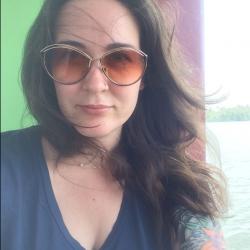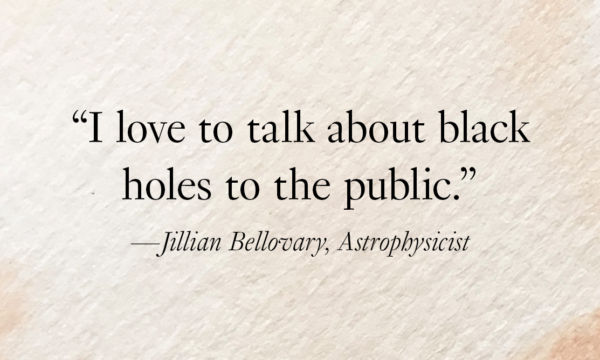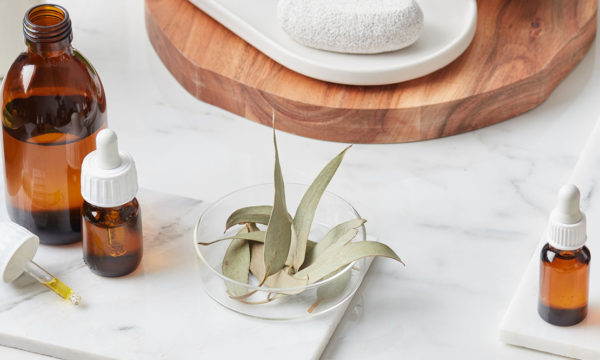So, What Do You Do? Part 5: Dr. Karen Holmberg, Volcanologist
March 15, 2019
“So, What Do You Do?” is an MM series featuring extraordinary women in the kinds of jobs that make you sit up and say, “What’s that like?” Every week, another original entrepreneur, executive, artist, or scientist will own the answer by sharing what she does, how she does it, and why she does what she does. Up this week, Dr. Karen Holmberg, volcanologist, on beauty, mischief, and prying leeches off her ankles.
A self-proclaimed “volcano fetishist,” archeologist Dr. Karen Holmberg has spent most of her adult life studying what happens above and below the earth’s crust. The daughter of a NASA aerospace engineer, she grew up on a farm in rural Virginia and “fell in love with volcanoes” at the age of seven. “I found a book from my father’s childhood called The Book of Marvels with a chapter about Pompeii and Vesuvius,” Holmberg says—and she was hooked. Holmberg attended the University of Virginia, but before following the path toward her science career, she took an abrupt left after being scouted by a modeling agency one day in Miami Beach. Based in New York and Paris, Holmberg traveled the world on photo shoots for fashion magazines for several years. When she finally returned to science, she earned her Ph.D. in Anthropology at Columbia University. After gigs teaching at Brown and Stanford, she is currently a visiting assistant professor at New York University’s Gallatin School of Individualized Study. In addition, Holmberg is leading a team, funded by National Geographic, which is studying a rock art cave complex in Chaiten, Chile.
Here’s just some of what she does in a day:
Right after breakfast, loads up a 4×4, drives it to the end of a dirt road, hikes along a black sand beach, traverses a field of large boulders slippery with algae, clambers up a muddy slope, and reaches the cave complex. (In Chile, that is.)
“My team and I then split up into groups for archaeological excavation, artifact sifting, and examination of the volcanic landscape for evidence of past eruptions. At lunch, we sit on volcanic rocks on the beach and watch Chilean dolphins and Humboldt penguins. At 4:30 p.m., we hike back and at dinner, over Chilean red wine, we talk over the day’s research. Then we retire to our bunks.”
Feels fortunate to be woken up sometimes by violent shaking.
“In the middle of the night—if we’re lucky—we are awakened by an earthquake. It reminds us that the planet is very much alive!”
Is also regularly reminded of the meaning of life.
“I’ve had the chance to hear firsthand accounts from witnesses of a catastrophic volcanic eruption. The message is always that life changes dramatically and unexpectedly. It’s not the things we own, but the little details and living creatures that make up our lives that [mean the] most.”
Defines success accordingly.
“Success is feeling alive and appreciating life for the temporary, beautiful state that it is.”
Is not fazed that the volcano she works under erupted unexpectedly in 2008.
“The eruption prompted the largest evacuation in Chile’s history.”
Relishes her team members.
“My job, like most others, relies on relationships. My tribe is the people who look at long-term geophysical processes and how people intersect with them. We tend to communicate well out of a shared love for the material.”
Loves the alchemy that occurs between the two sides of her job.
“I like getting dirt under my fingernails and don’t mind scrapes and bruises. I also enjoy getting deeply submersed in books and ideas— the research portion. When you combine those two components, the data becomes a fascinating puzzle.”
Stands in awe of her subject.
“When I am on the rim of a volcano, I get an intense high for months. Each experience is unique and powerful. Especially if you can slip away on your own and feel a moment of quiet. It cannot be properly described in words.”
And then there are the leeches.
“I had to pull them off my ankles in Patagonia. They get through the thickest socks and the bite marks itch for weeks.”
Uses running to learn how to push through discomfort.
“I’ve been a distance runner for many years. The lesson reinforced by long runs is that if you just put one foot in front of the other and push through the discomfort, you will get to where you want to be. It’s all about endurance. I’m a much stronger runner now than at age 21. It’s empowering to see my times getting faster.”
Takes notes the old-fashioned way.
“I love writing field notes by hand in leather-bound notebooks that I can look back at later as personal artifacts. I’ll be able to pull them off the shelf years later and see the rain-soaked pages and smudges of dirt and remember exactly what it felt like at the moment when I wrote. A digital pen allows me to upload my handwritten notes to PDF. Then I’ve got the physical book but also the insurance that I can always access the notes when traveling.”
Gives thanks that she diverged from a set academic path when she was younger.
“I had the chance to support myself, travel, and learn to stand on my own in a very bruising industry. Seeing the different ways that people find their way in the world was more educational than a classroom would have been for me at that age. It also meant that when I decided to return to the sciences, it was something I really wanted but for different reasons than before. I was also more secure in pushing back against disciplinary boundaries that seemed arbitrary and unnecessary.”
Keeps adding to an amazing portfolio of workplaces.
“I’ve done fieldwork in Belize, El Salvador, Greece, Hawaii, Papua New Guinea, Panama, and Patagonia. I’ve applied my research interests in Amazonia, Antarctica, Bhutan, China, Iceland, Indonesia, India, Japan, and Peru.
Keeps her priorities in order.
“Glacial retreat and sea level rise are just as dramatic and iconic as volcanic eruptions, but volcanoes are still my first love.”
Ponders her future.
“I would make a fantastic eccentric polymath. I would model myself after Athanasius Kircher, who had himself lowered into Vesuvius to study it during an eruption and who invented things like a vomiting mechanical lobster and a piano made of cats with differently pitched yowls. When not doing that day job, my hobby would be collecting meteorites.”
Hopes to be remembered for the fun things.
“Kindness, of course, mixed with mischief.”









